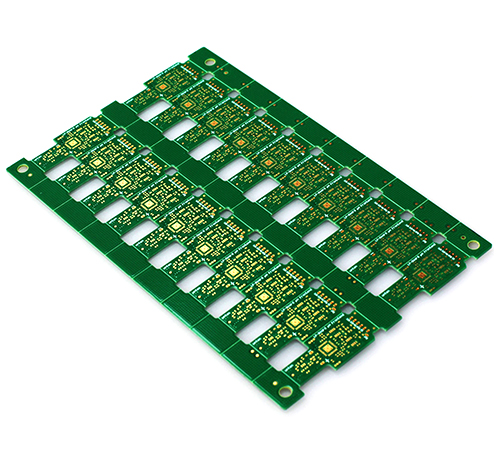Time:2022-08-18 Visit:
The PCB circuit board is the basic electronic component of all electronic circuit designs. As the main support, it carries all the components that make up the circuit. The effect of PCB is not only to combine sporadic components, but also to ensure the regularity of circuit planning, which well avoids confusion and errors caused by manual wiring and wiring.

1. Have a reasonable direction
Such as input/output, communication/DC, strong/weak signal, high frequency/low frequency, high voltage/low voltage, etc. Their direction should be linear (or separate) and not merge with each other. The intent is to avoid interfering with each other. The trend is in a straight line, but it is generally not easy to achieve. The unfortunate trend is circular. Fortunately, barriers can be set up to bring improvements. For DC, small signal, low voltage PCB planning requirements can be lower. So "reasonable" is relative. multilayer pcb
2. Choose a good pick-up address: pick-up address is often the most important
I don't know how many engineers and technicians have made a lot of comments on it, which shows its importance. Under normal circumstances, it is required to have a common ground, such as: multiple ground wires of the forward amplifier should be combined and then connected to the trunk ground and so on. In practice, it is difficult to do it completely due to various restrictions, but it should be done as much as possible. This problem is reasonably sensitive in practice, everyone has their own set of solutions, and it is easy to understand if it can be explained for a detailed circuit board.
3. Reasonable placement of power supply filter/decoupling capacitors
Generally, only a few power supply filter/decoupling capacitors are drawn in the schematic diagram, but they are not indicated where they should be connected. In fact, these capacitors are set up for switching devices (gate circuits) or other components that need filtering/decoupling. Placing these capacitors should be as close to these components as possible, and it will be ineffective if they are too far away. Interestingly, when the power supply filtering/decoupling capacitor placement is reasonable, the problem of connecting the address is not so obvious.
4. The line diameter is required, and the size of the buried via hole is appropriate.
Conditionally wide lines should never be made thin; high-voltage and high-frequency lines should be smooth, without sharp chamfers, and corners should not be used at right angles. The ground wire should be as wide as possible, and a large area of copper should be used, which will greatly improve the docking address problem. The pad or via size is too small, or the pad size does not work well with the drill size. The former is bad for manual drilling, and the latter is bad for CNC drilling. Simply drill the pads into a "c" shape, or drill out the pads for heavy lifting. The wires are too thin, and there is no copper coating in the large unwiring area, which simply causes uneven corrosion. That is, when the unwiring area is corroded, the thin wires are likely to corrode too much, or seem to be broken, or completely broken. Therefore, the effect of setting copper plating is not only to increase the ground area and anti-interference.
5. Number of vias, solder joints and line density
Some problems are not easy to be found in the early stage of circuit manufacturing, and they often emerge later. For example, there are too many wire holes, and the copper immersion process will be dangerous if it is not careful. Therefore, it is necessary to reduce the wiring holes as much as possible in the planning. The density of parallel lines in the same direction is too high, and it is easy to connect them together when welding. Therefore, the linear density should be confirmed according to the level of the welding process. The interval between the solder joints is too small, which is unfavorable for manual welding, and the welding quality can only be solved by reducing the work efficiency. Otherwise danger will remain. Therefore, the confirmation of the Z minimum interval of the solder joints should take into account the quality and ergonomics of the welding personnel.